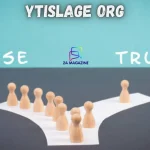The New Era of Global Digital Agreements
In the past, digital agreements were often handled within a single office, a single time zone, and under a single set of regulations. Today, that reality has shifted entirely. Enterprises now manage contracts, proposals, and compliance documents across multiple countries, legal systems, and business cultures. The rise of remote and hybrid work models has only accelerated this trend, making secure and scalable electronic signature solutions essential to keeping global operations running smoothly.
While many organizations already have an eSign process in place, the demands of operating across borders often reveal hidden limitations—particularly when it comes to speed, integration, and compliance flexibility. The question for global teams is no longer whether they should digitize agreements, but whether their chosen solution can truly scale with them.
Industry Challenge – Scaling eSignatures Across Borders
Operating across jurisdictions brings complexity that a one-size-fits-all eSignature platform can’t always solve. Organizations face challenges such as:
- Regulatory compliance in multiple countries, from GDPR in Europe to eIDAS in the EU and ESIGN in the U.S.
- Localization needs, including multi-language support for both documents and user interfaces.
- File size restrictions that make it difficult to send large technical documents, high-resolution images, or multi-part contracts.
- Integration gaps that slow workflows when systems like CRMs, ERPs, and project management tools cannot connect seamlessly.
- Escalating costs when scaling users and transactions globally, especially with pricing models that don’t account for regional differences.
For many enterprises, these challenges emerge only after initial adoption, when growth and international expansion push their existing eSign workflows beyond the limits they were originally designed for.
Existing Solutions Overview
Industry leaders such as DocuSign and Adobe Sign have long provided reliable tools for basic electronic agreement needs. These platforms offer established security measures and are widely recognized across industries. However, their capabilities can become restrictive when global scalability enters the equation.
Common constraints include capped document upload sizes, limited integration options without costly add-ons, and pricing structures that may not align with multi-regional scaling. As a result, organizations often begin their evaluation by seeking a comparison of DocuSign and Adobe Sign to understand where these solutions excel—and where newer platforms can address modern global needs more effectively.
Alternative to Legacy Solutions – Features That Truly Scale
For organizations with a global footprint, the right eSignature solution must go beyond basic document signing. It needs to support the realities of large-scale, cross-border operations without adding complexity or cost. Modern alternatives offer:
- Support for large file uploads up to 250MB – Ideal for industries where contracts include architectural plans, technical schematics, or multimedia attachments.
- 100+ native integrations – Connecting seamlessly with CRMs, ERPs, project management platforms, and cloud storage tools to maintain uninterrupted workflows.
- Cost efficiency – Pricing structures that can be up to 50% more affordable than legacy tools, making scalability financially sustainable.
- Compliance flexibility – Adapting to multiple international regulations while maintaining security certifications like SOC 2, ISO 27001, and GDPR alignment.
These features aren’t simply “nice to have”—they are essential for enabling smooth operations when teams are spread across continents and time zones.
Real-World Adoption Insights
Consider a global manufacturing company negotiating with suppliers in multiple countries. Their contracts often include detailed engineering drawings, which easily exceed the file size limits of many legacy eSign platforms. By adopting a large-file-capable solution, they eliminated the need for separate file transfers, reducing delays and compliance risks.
Similarly, an international law firm managing multi-language agreements across different legal frameworks was able to cut turnaround times significantly by leveraging built-in language support and deep integration with their document management system.
Industry recognition also plays a role in vendor selection. Being named a Leader in the IDC MarketScape and holding a 4.4 rating on Gartner Peer Insights are strong indicators that a platform has been tested, trusted, and validated in real-world enterprise scenarios. As one CIO put it, “For us, scalability wasn’t about adding more licenses—it was about making the process work seamlessly no matter where in the world our teams were.”
For organizations seeking a future-ready electronic signature platform, scalability means more than just adding users—it means removing the friction points that slow down cross-border collaboration.
Conclusion
Global teams can’t afford inefficiencies in their agreement processes. The ability to send large files, integrate with existing tools, comply with varied regulations, and scale without runaway costs is what sets modern solutions apart from legacy systems.
Whether you’re expanding into new markets, collaborating across multiple jurisdictions, or simply looking to streamline operations, a scalable eSignature platform is no longer optional—it’s foundational.
See how your organization can achieve cost-effective, compliant, and scalable agreements worldwide—Book a Demo today.
Ready for more? Keep reading the blog for additional tips and inspiration!







